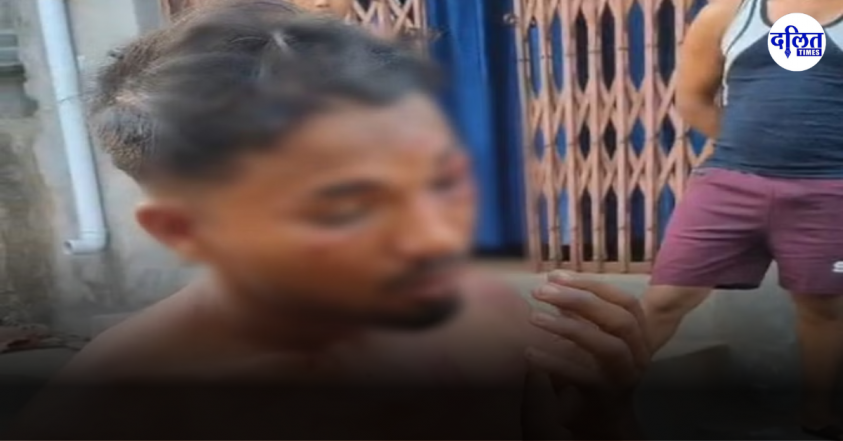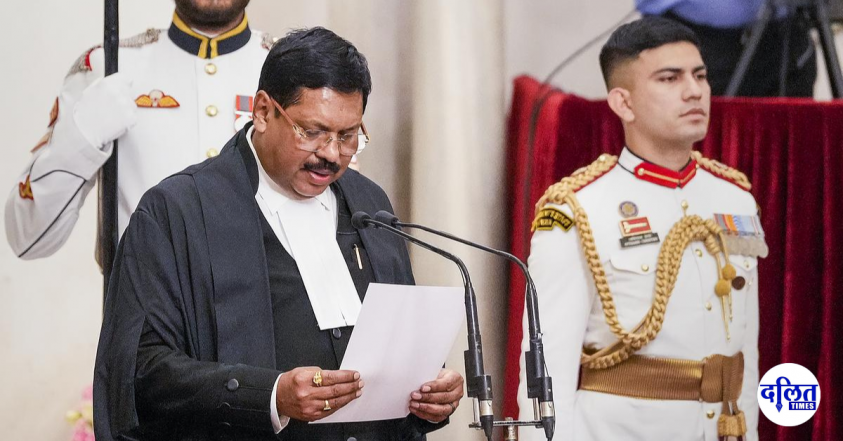The brother of the victim alleged that his brother had been held captive overnight and assaulted with water pipes, Batons, footwear and needles. He belonged to satnami community the accused’s belongs to Chandars an OBC community…
In yet another chilling reminder of caste terror that grips the Indian social fabric, a young Dalit man from Sakti district in Chattisgrah was publicly stripped, paraded and brutally beaten—his only ‘crime’: daring to love across caste lines. The incident, which took place in Bade Raveli village under Malkharauda Police Station limits, is not an isolated aberration, but a disturbing echo of the systemic and institutional violence that continues to target Dalit and Adivasi communities across the country.
The young man, a resident of Devgaon, had gone to visit a girl he was reportedly in a relationship. Upon discovering the relationship, the village men captured him, detained him overnight, and the following morning dragged him to the village square. There, in full view of the public, he was stripped of his clothes and his dignity, and then beaten black and blue by his captors.
Also Read : महात्मा ज्योतिबा फुले पर बनी फिल्म “PHULE” पर लगे जातिवाद फैलाने के आरोप…
The brother of the victim alleged that his brother had been held captive overnight and assaulted with water pipes, Batons, footwear and needles. He belonged to satnami community the accused’s belongs to Chandars an OBC community. Malkkharoda Police register suo moto case and arrest six accused.
The violence was not only just physical but also was symbolic, it was social, and it was deeply political. It was an act designed to reinforce caste hegemony, to terrorize a community, and to remind Dalits that their desires, their bodies, and their autonomy continue to be policed and punished by dominant caste pride.
The crime was recorded by onlookers. In an act of digital sadism, the video was circulated widely on social media, turning the young man’s humiliation into viral content. The footage didn’t emerge from a sense of justice, but from voyeuristic power—yet it forced the authorities to act, not out of empathy or outrage, but out of the shame of being exposed.
Also Read : राष्ट्रपिता ज्योतिबा फुले: समता, शिक्षा और चेतना के प्रतीक
The victim, now receiving treatment at Raigarh Medical College, is reportedly in serious condition. But what about the internal wounds? The trauma of being dehumanized so publicly, of being treated like an object in a medieval punishment ritual, cannot be healed by medicine alone.
This is not an exception. It is part of a continuum of caste brutality that is normalized in rural and urban India alike. Chhattisgarh, like many other Indian states, continues to bear witness to increasing caste atrocities despite constitutional protections. The SC/ST (Prevention of Atrocities) Act exists—but its enforcement is selective, weak, and often compromised by the casteist leanings within the very institutions meant to deliver justice.
What does it say about our democracy when a Dalit youth can be stripped and tortured in public while the state fails to prevent or immediately respond to such acts? Human rights defenders and political opposition have rightly raised alarms, questioning the “good governance” narrative that conveniently erases the violence faced by marginalized communities every single day.
This violence is not about a love affair gone wrong. It is about dominance. It is about sending a message that Dalits should not cross invisible caste boundaries—that their lives, desires, and rights are still considered subordinate. It is about perpetuating Brahmanical patriarchy and silencing any form of Dalit assertion, especially in intimate spaces.
The question is not just whether the perpetrators will be arrested—but whether they will be punished. Will the state file cases under the SC/ST Act? Will the police act independently or buckle under pressure from dominant caste lobbies? Will the judicial system uphold the rights of the victim—or protect the social status of the accused?
Also Read : हरियाणा : डॉक्टर अंबेडकर की तस्वीर की बेअदबी मामले में SC संगठनों ने किया जबरदस्त रोष प्रदर्शन…
We are not dealing with an isolated failure of law and order. We are confronting a structural reality where caste violence is part of the everyday fabric of Indian life. From institutional murders like Rohith Vemula’s to mob lynchings, from the rape of Dalit girls in Hathras to the massacre of the Bhotmange family in Khairlanji—these stories form a long and unbroken chain of horror.
Let us be clear: unless we demand and build radical structural justice, these incidents will continue. We need swift prosecution, but we also need transformative social change. Education, land reform, political representation, caste census, and grassroots assertion must be central to our response. The resistance cannot just be legal—it must be moral, cultural, and collective.
Let us remember this young man not just as another victim, but as a symbol of a battle that is still raging. His pain must echo in our protests, his humiliation must not be forgotten, and his name—though perhaps not yet known—must join the roll call of all those whose lives were crushed under the weight of caste.

